Part One: 6 Basic Mobility Exercises for Lower Back Pain
As accredited exercise physiologists, we treat a lot of clients with both chronic and/or acute lower back pain on a daily basis. Whether you have a back injury or you find yourself feeling tight and stiff after a long day of sitting at work, increasing mobility of your lumbar spine and surrounding musculature is vital in managing pain prior to initiating an appropriate strengthening program. In this series, we will be exploring the musculature of the lumbar spine and surrounding structures to help you gain a better understanding of lower back pain and the rehabilitation strategies we use to help our clients. The lumbar spine comprises of 5 vertebrae in the lower back region, and these vertebrae provide structure and support for the torso and the pelvis. In this article, we will be exploring the joints of the lumbar spine and pelvis as we go through 6 basic mobility exercises to help improve range of motion.
Firstly, let’s have a look at what your lumbar spine actually looks like. The image below shows all the vertebrae (bones protecting your spinal cord) in your lumbar spine, your sacrum and your pelvis (Image 1). There are many muscles that originate from and insert all over these bones so let’s move onto mobilizing these joints and muscles.

- Pelvic Tilts – Starting in a 4 point kneeling position, slowly arch your lower back as far as you can. Hold for 3 seconds, breathe. Then slowly flex your lower back as far as you can. Hold for 3 seconds, breathe. Repeat 10-20 times or as necessary 2 x daily.

Image 2: Lumbar Extension
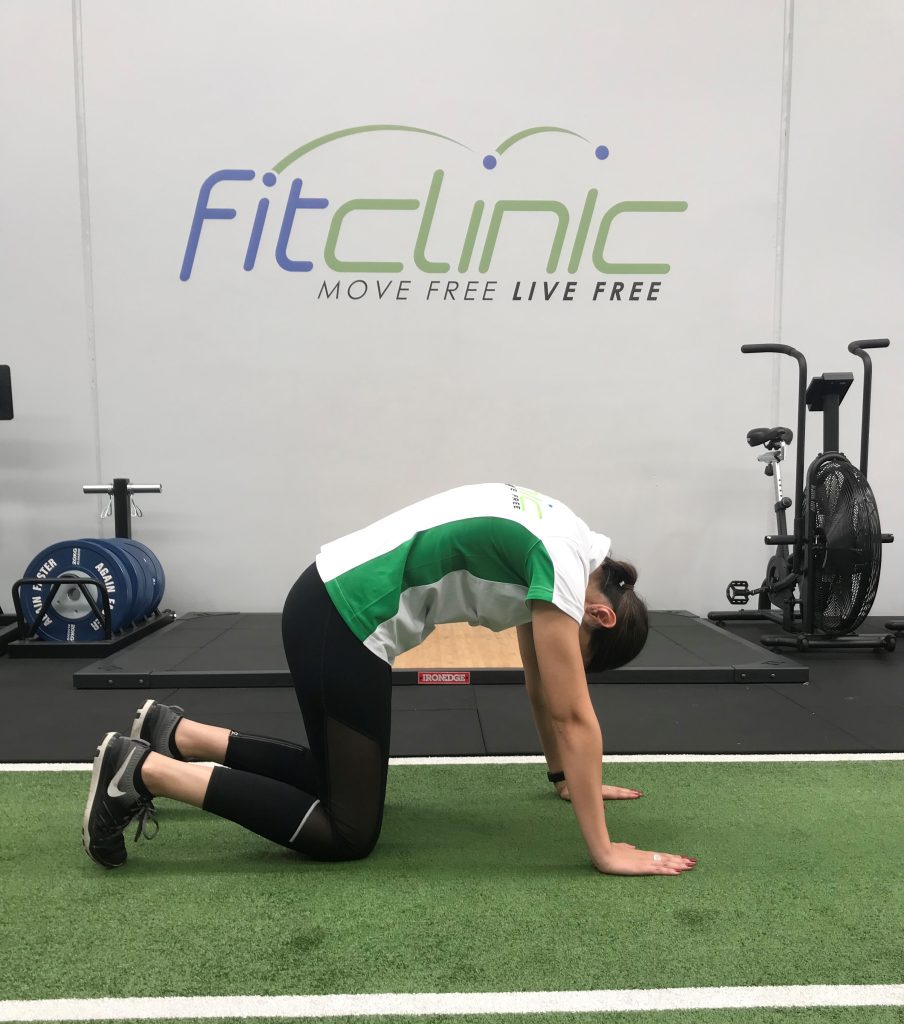
Image 3: Lumbar Flexion
2. Lumbar Rocks – Start in a lying down position with your knees up and feet flat on the floor. Slowly rock your knees over to one side as far as you can, then bring them back to your start position. Then rock your knees over to the opposite side. Repeat 10 times on each side, 2 x daily.
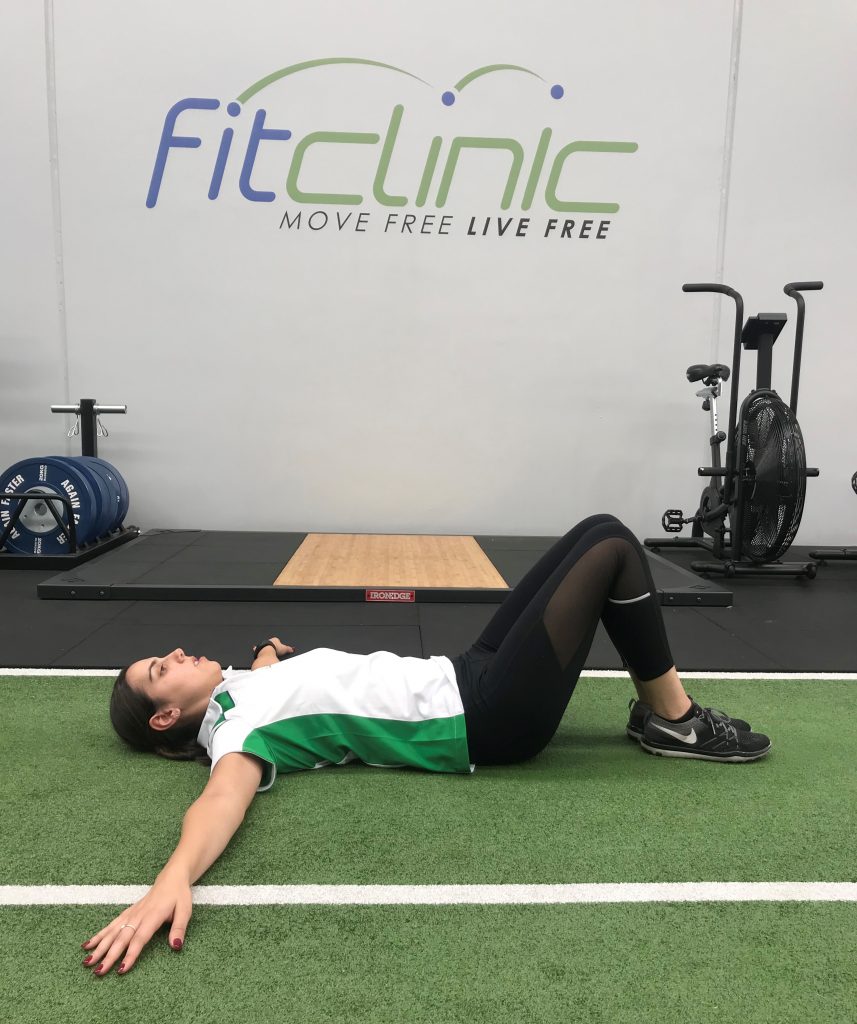
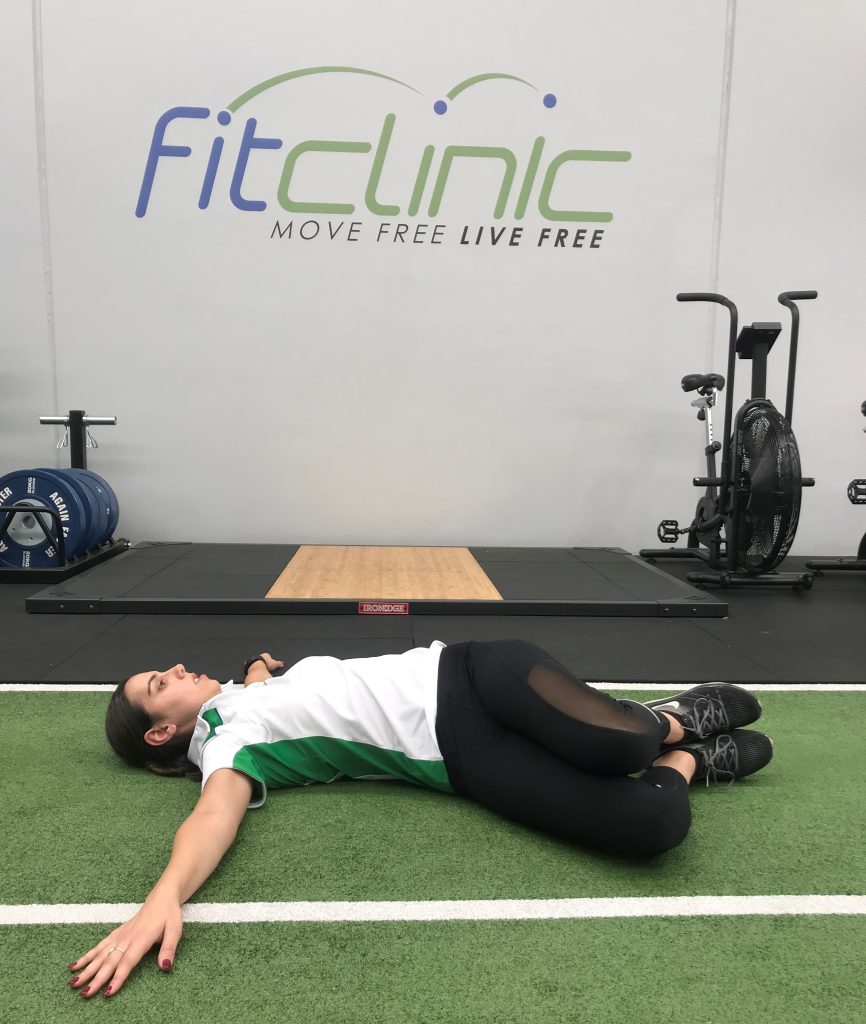
3. Child’s Pose – Starting in a 4 point kneeling position with your knees wider than your hips or as wide as possible. Next sit back as far as you can onto your feet, reaching your hands as far forward as you can. Hold here for 20 seconds, breathe. Return to your start position and repeat 3 times, 2 x daily.
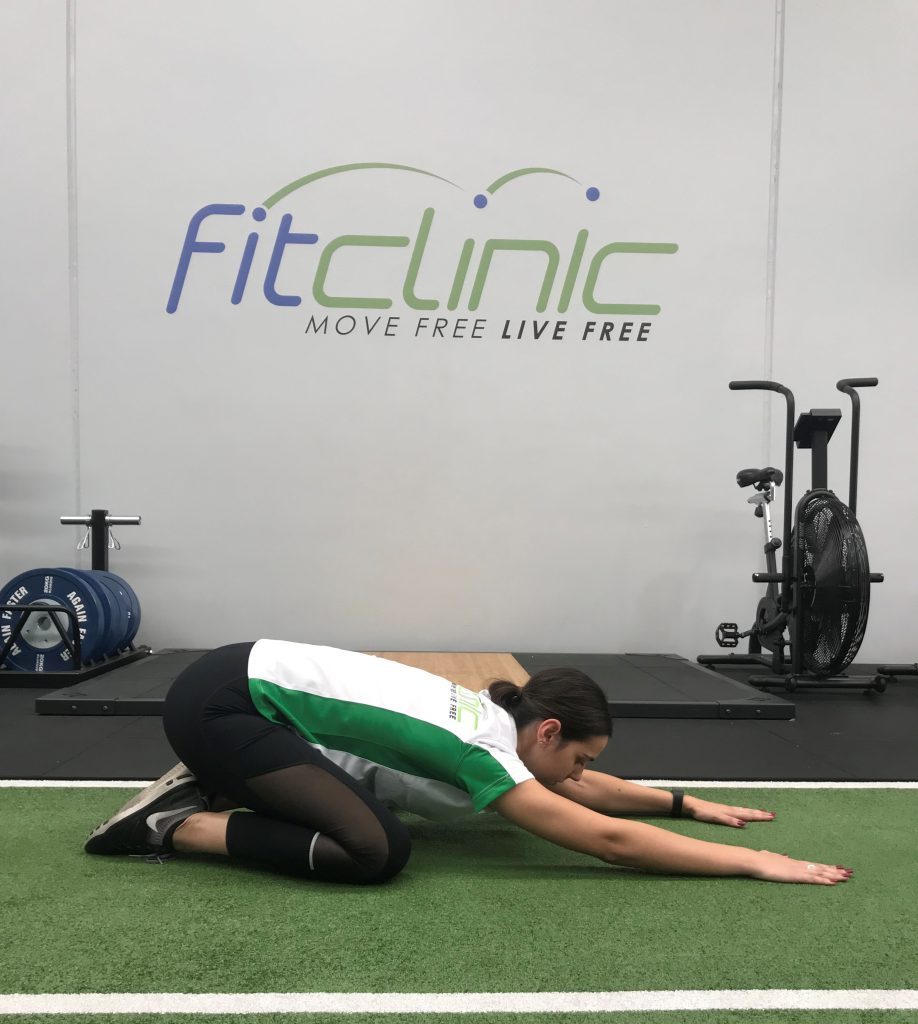
4. Hamstring Stretch – Standing upright with your hips and body facing a box or step, place one heel on the step with your toes pointing toward the ceiling. Slowly bend forward at your hips, keeping your spine neutral (not bending at your lower back) as far as you can. Hold for 20 seconds, breathe, then repeat on the opposite leg, 2 x daily.
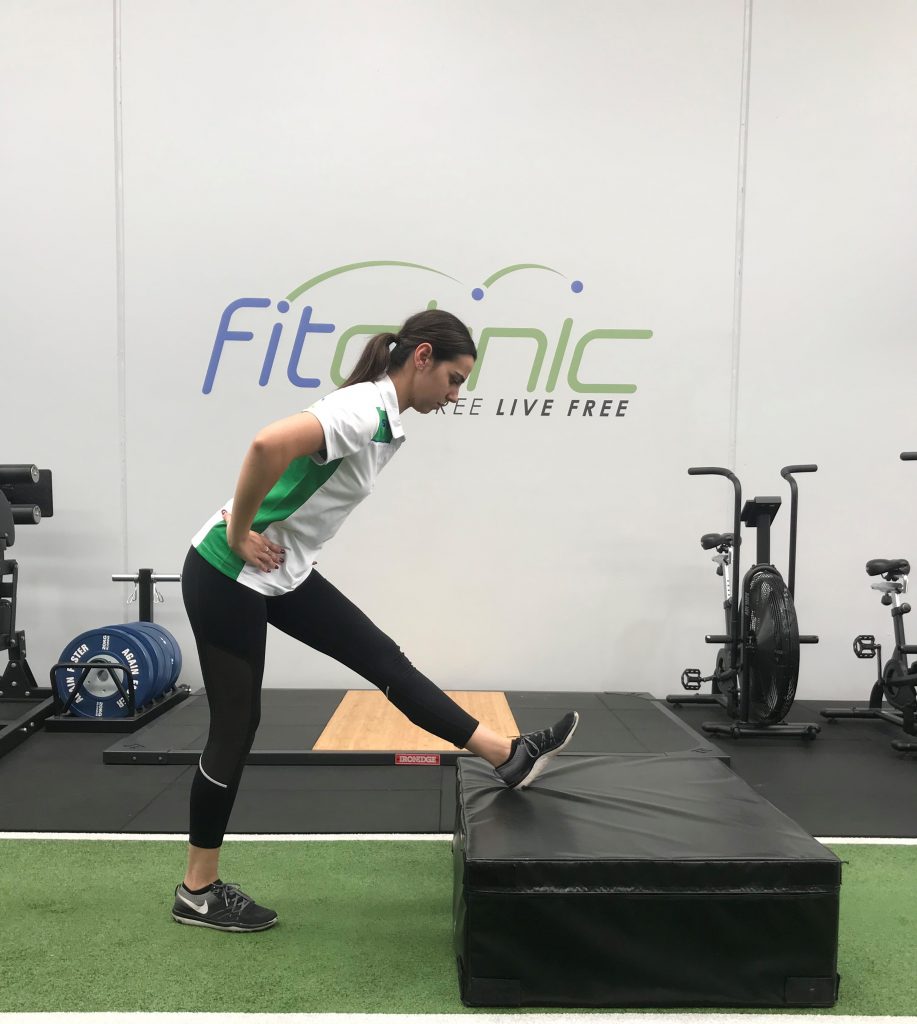
5. Half Kneeling Hip Flexor Stretch – Kneeling on one knee (place a pillow under your knee if necessary) with your opposite foot on the ground, ensuring both knees are flexed to 90 degrees. Slowly tuck your tail bone under your body then lean forward onto your front foot. Try to keep your torso upright. Hold for 20 seconds, breathe, then repeat on the opposite leg, 2 x daily.
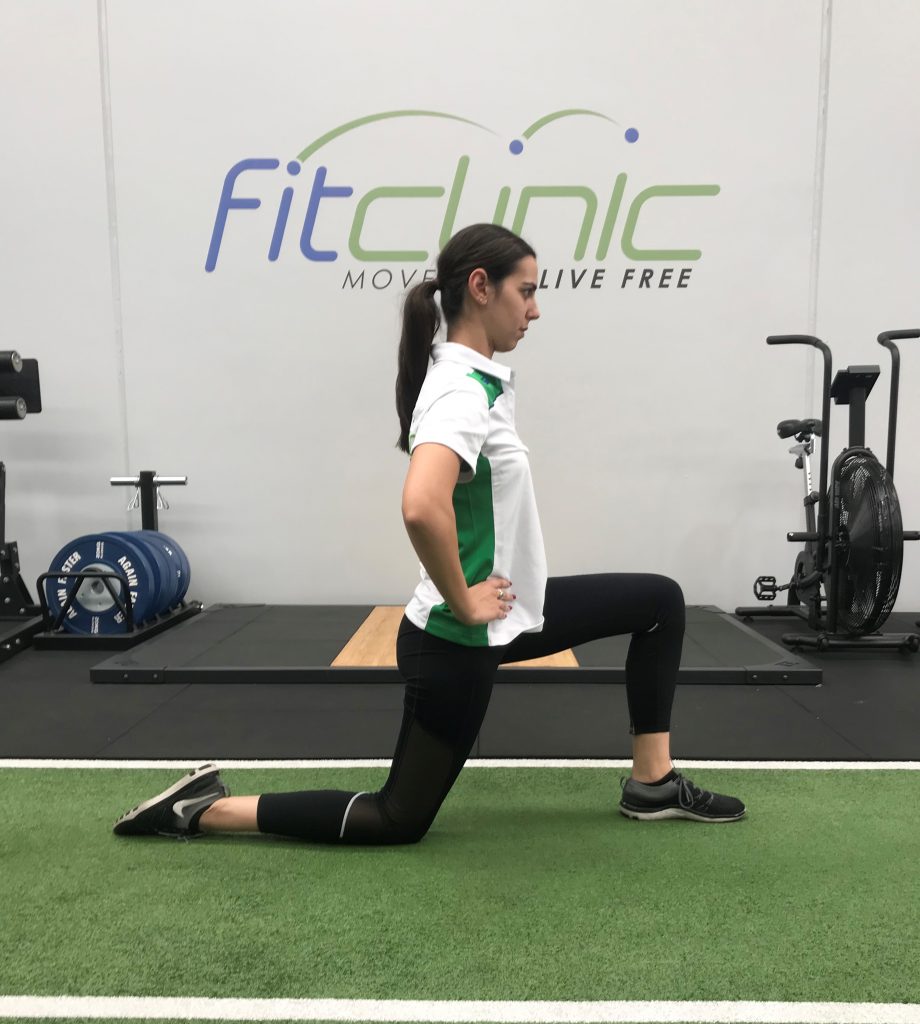
6. Seated Gluteal Stretch – Sitting on a chair or bench, place the outside of one ankle on your opposite leg. Ensuring you are sitting up tall and your hips are even, slowly place pressure on the knee of the leg that is lifted as far as you feel comfortable. Hold for 20 seconds, breathe, then repeat on the opposite leg, 2 x daily.

